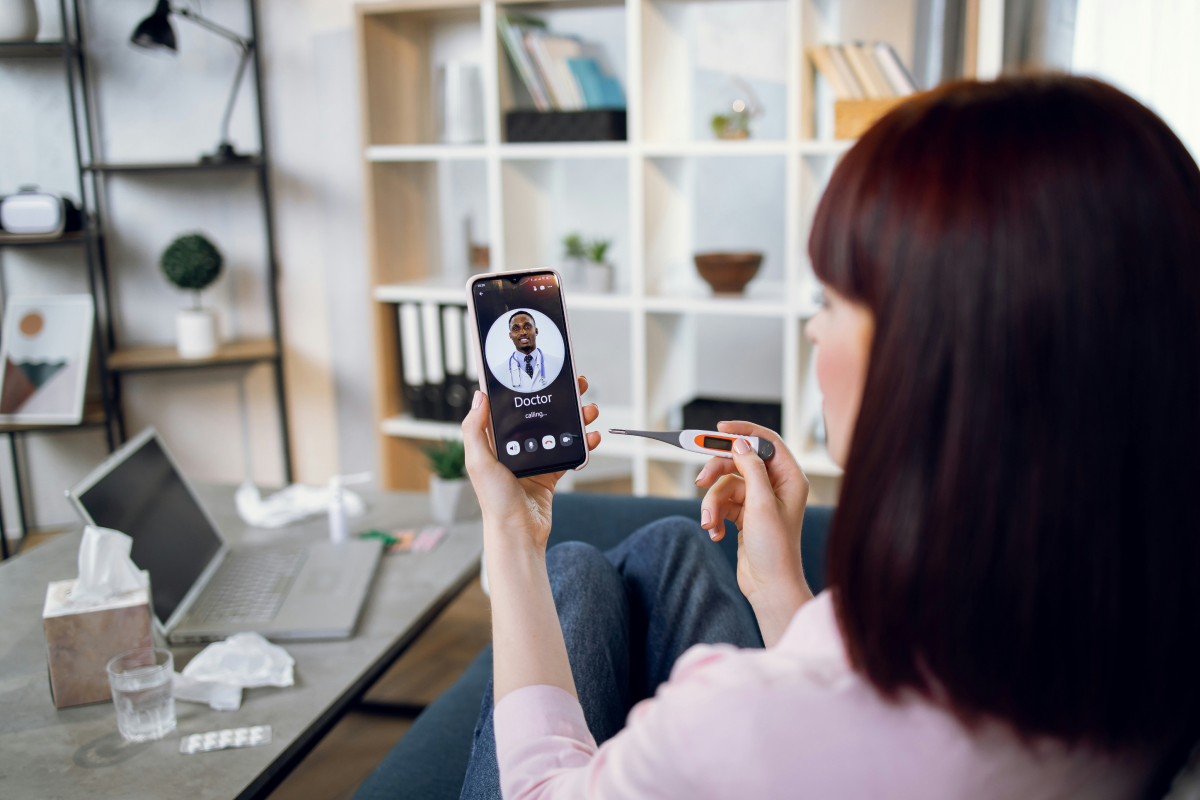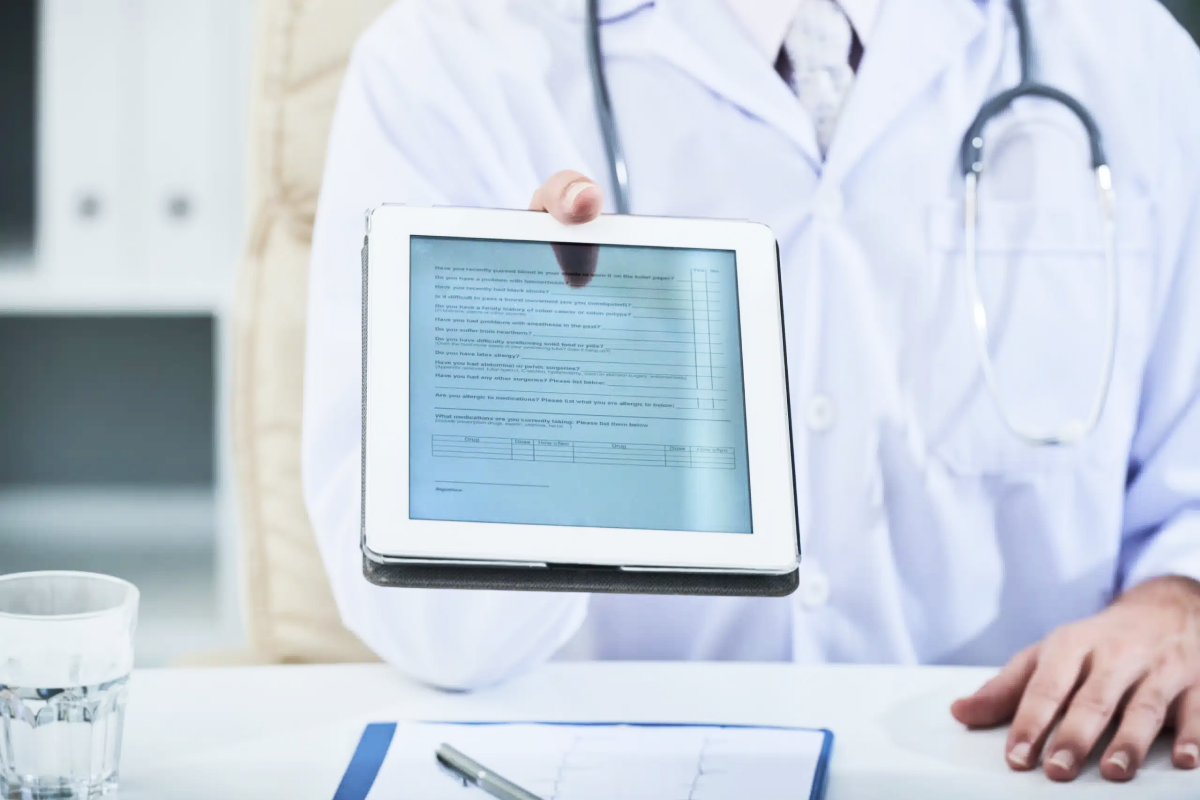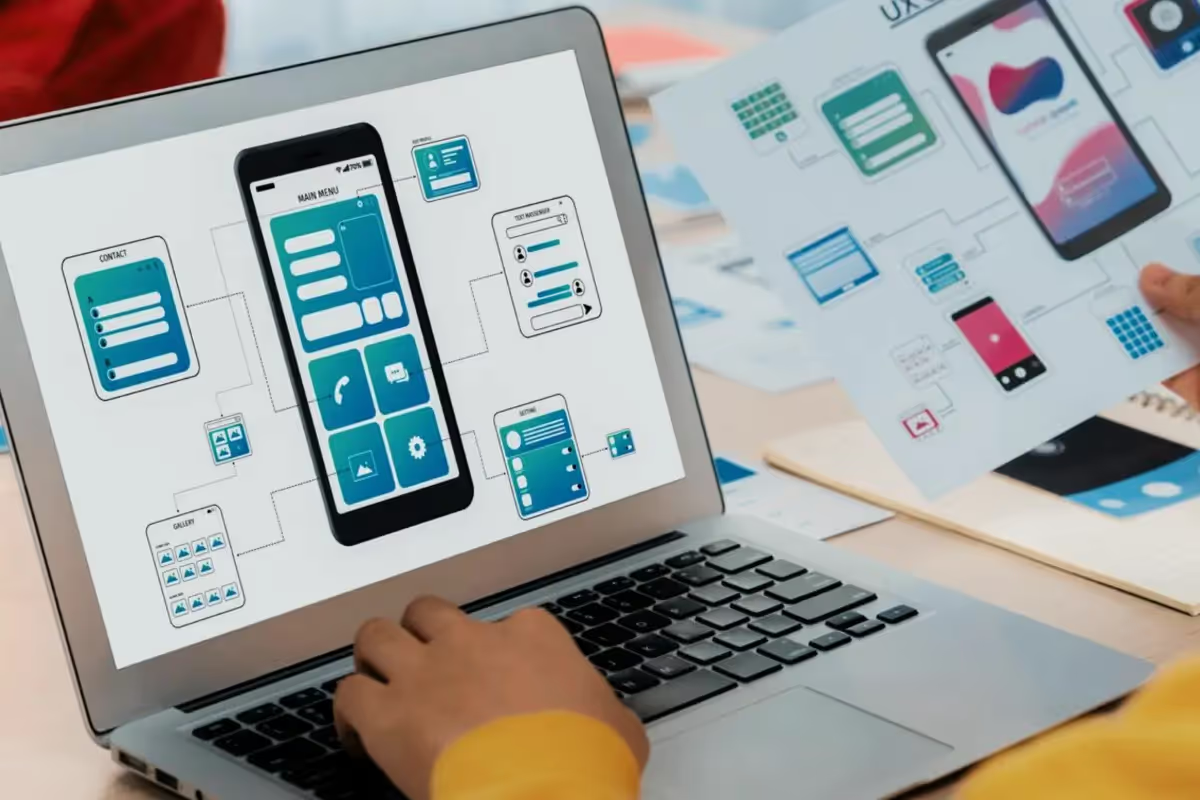Telemedicine app development is gaining momentum. The pandemia boosted the need for digital health startups, and we saw it in the number of healthcare deals. In 2021 the US-based digital health startups brought $21B in venture funding in total and beat the previous record of $14B set in 2020.
Ok, but what about the overall economic downturn that we all were warned about? Well, it looks like the venture funds, in general, will batten down their hatches, but veteran digital health investors appear ready to stay and support the telemedicine startups. Investors have their eye on innovative tech, and innovations in healthcare mean using AI, IoT, and data analytics technologies. So the key thing for you as a healthcare startup founder is to innovate.
I’m here to help you along the way. As a Product Manager, I have helped to launch two telemedicine products for our clients. I will explain:
- how to implement the latest tech to your telemedicine app;
- what is the state of the healthcare market;
- what monetization model to pick;
- what compliance regulations to follow;
- how to solve challenges in telemedicine app development.
This article is based on my knowledge and practice, so I hope you’ll find it helpful.
Telemedicine App: The Basis
Let’s start from the basis and define what a telemedicine app is and what app types you should consider developing in 2022.
What is Telemedicine App?
Imagine a world where you can do a health checkup by yourself, take your blood and heart pressure, and then remotely send it to your doctor, who will decide what medications you need and if you should come to the hospital for more tests. Healthcare startups are working to make that a reality by developing telemedicine apps.

The big idea of telemedicine is to complement regular healthcare with technologies and make healthcare services affordable to everyone and everywhere. Here’re the major healthcare services that telemedicine app development provides:
- Online chat messaging & video calls with doctors;
- Assess and treat minor health conditions;
- Access therapy and other mental health services;
- Request or renew prescriptions for medications;
- Monitor physical health conditions.
Types of Telemedicine Applications You Should Consider
If you’re at the first stages of developing telemedicine software, you were probably surprised by the variety of telemedicine app types out there. A big choice of app types – from chronic condition monitoring apps to mental health platforms – is available.
To save time and keep you updated with the trends, here are 3 emerging telemedicine app types that you should watch closely in 2022.

Digital therapy
The beauty of digital therapy is in its potential to change the way care is delivered. According to the Reportlinker report, the digital therapeutics market is going to hit $13.1 billion by 2026, up from $3.4 billion in 2021.
Procedures that cost thousands of dollars and take hours waiting in queues can now be reduced to patients using apps or wearable devices. Digital therapy apps will enhance the data range gathered from patients, which can be used to provide more effective treatment in general. That’s why both healthcare organizations and investors are interested in developing digital therapeutics.
Examples: Neuroglee, Biofourmis.
Remote monitoring
Let’s take a look at some statistics first.
The global remote patient monitoring market was valued at $975M in 2020 and is expected to reach $3.24 billion by 2027.
Source: alltheresearch.com
The first thing associated with remote monitoring is patients' convenience. By developing a remote monitoring telemedicine app, you help people get care outside the hospital. But there's a more substantial clinical and economic reason for that.
Data gathered by remote monitoring apps can be used to inform clinical research into drug discovery and boost new treatment development. On the other side, this data can give a better picture of a patient's medical history and then be analyzed to identify people who are at high risk.
Examples: WebMD: Symptom Checker, eVisit, Teladoc Health, MedM Health.
Chronic conditions treatment
In 2021, around 15% of US adults reported having at least two chronic medical conditions. While heart disease is the leading cause of death in the US. Someone has a heart attack every 40 seconds, and heart disease treatment costs the country about $219B annually from 2017 to 2018.
The number of individuals with chronic conditions who use mHealth apps has increased from 45.8% in 2017 to 59.8% in 2019.
Source: National Libraray of Medicine
The main advantage of telemedicine apps that can't be overrated is improved access to care. The ease of use of telemedicine apps breaks down the time, transportation, weather, and mobility barriers. Research has shown that frequent telephone contact may improve treatment outcomes, particularly in vulnerable/low socioeconomic areas.
Examples: Curable, Hello Heart, Livongo.
Why to Develop Telemedicine App?
We see the high demand for telemedicine app development from all sides: medical organizations, health investors, and patients, but I'd like to quickly highlight two reasons why I personally consider that telemedicine is rewriting the future.
Real-world data is boosting treatment
Telemedicine and devices always go in parallel. Smartphones, wearables, and sensors that collect health-related data are inevitable to any telemedicine app. Some might say that we become locked with devices more and more, but in my view, these devices provide medical organizations with real-world data, which is priceless.
This data gives us insights and answers to better clinical treatment. I think that the companies that wisely integrate and analyze health data from telemedicine apps will continue to prosper.
Healthcare is becoming truly personalized
Telemedicine opens the opportunity to reinvent the healthcare industry fully. With all the tech solutions, like virtual treatment, remote health monitoring, and smart algorithms, the healthcare system operates around the patient experience and ensures patients get the best care possible.
I'm sure we'll see healthcare startups creating effective drug therapies based on users' individual conditions, which would be safer, cheaper, and more efficient because they're fine-tuned to each person's unique genetic makeup.
COVID & Remote Lifestyle
The COVID-19 pandemic boosted the shift to online consulting even further. Telemedicine apps make it possible to send a short message, share photos or documents with doctors and get immediate consultation. Once people feel it, they don't want things to get back.
I see the tendency toward a remote lifestyle, and healthcare isn't an exception. That's why telemedicine has the potential to become a universal health coverage by providing cost-effective and accessible care.
Telemedicine Apps: Monetization Examples
There are three most popular monetization models that work best for telemedicine apps.

Subscription
Users pay a monthly or yearly fee to use the app. The subscription model is good for user acquisition because it's psychologically convenient for people to pay for something once in a while rather than giving you money weekly. In addition, investors tend to like products with subscription model because it's gives the better understanding of the ROI.
Transaction
The transaction fee model means that the platform charges a fee for each payment a user makes. This is considered the most profitable telemedicine monetization model. The most successful telemedicine apps such as Teladoc, MDLIVE, and LiveHealth are using this model.

In-App Ads
In-app advertisements is very common monetizing strategy among free telemedicine applications. In-app ads may include fitness apps, supplement brands, etc. This approach has low-profit potential and demands big attention to the business you’re partnering with as they must be relevant to your audience and trusted.
Examples: MyTheraphy, Doctor On Demand
Must-Have Features For Telemedicine Apps
Telemedicine apps differ, and so do their features. For example, the feature set in the mental health app is a bit different from the virtual treatment app. What's more, the features for patients and doctors also differ. As I have experience developing different telemedicine apps, I gathered the most common features for both patients and doctors.

How To Develop A Telemedicine App: End-to-End Development
We at Uptech divide the telemedicine development process into 4 parts:
- Discovery;
- Design;
- Development;
- Post launch.
I'll tell you more about each below.
Discovery Part
The Discovery stage is where we have a mind meld with the client. We dig into everything about the project: problem statement, vision, scope, market, trends, etc. Usually, the Discovery stage includes:
- market & competitors research;
- user research;
- creating Proto Personas;
- prototyping and testing hypotheses;
- validating tech feasibility.
We do everything to create a user-friendly product with the right product-market fit. It's important to state what problem your product will solve first. If it's improved patient care, more satisfied patients, improved workflow for healthcare providers, reduced patient no-shows, etc. Based on the problem statement, we define the target audience, feature set, and think of the best tech solution.

If you already did your homework and come to us with a problem statement, congrats, we can move further. If you only have the raw idea of the app, we help you develop the telemedicine app from end-to end. This is what Discovery is for.
Design Part
Based on the insights and deliverables from the Discovery, we move to the Design part. The design process in telemedicine development doesn't differ from any other product and includes:
- Wireframes – a skeletal outline of the future product;
- User flow – visualized elements of the app and the connections between the steps users take;
- UX&UI design – the final product design with UX friendly interface.
Telemedicine apps, like any healthcare product, demand a higher level of user experience as your future users can have different mental or physical issues. I recommend providing a user experience as intuitive as possible and following the latest accessibility design trends.
To serve your patients better, hire software developers and designers who use the best practices.
Development Part
We're moving forward and coming to the development part. This is the time when we put all our knowledge and design concepts into a product and give it shape. The first challenge here is that telemedicine software must include the following things:
- HIPAA Compliance;
- UX-friendly interface;
- Video and audio connection quality;
- Good support;
- Possibility to record video;
- Secure users’ information;
- Transparent rating system.
Implementing such functionality takes time, but I have some tips I use in my working practice.
- Use compliant 3rd party providers;
- Choose the right tech stack;
- Hire experienced telemedicine app developers.
HIPAA Compliance Checklist
Using 3rd party providers will save time, and there're some really good solutions for telemedicine apps. Check them out in the HIPAA Compliance checklist. From product side, I advise you to provide:
- data encryption;
- safe and secure backup;
- secure authentication process;
- automatic log out.

Telemedicine app development tech stack
The right tech stack will ensure the app's salability and decrease risks. Here's a tech stack I recommend using:
- Mobile development: Kotlin, Java (Android), Swift (iOS)
- Back-end development: Node.js, Ruby on Rails, Elixir
- Videoconferencing: RTMP, Twilio, WebRTC
- Chat: Twilio, Socket.io
- Database: MySQL
- APIs and frameworks: Stripe, EC2, S3
- Security and privacy: Firewall, Multi-factor authentication (MFA), AES-256 encryption.
Post Launch
It's a mistake to think that product launch is the final line. After the release, the journey continues, which means lots of users’ feedback, cycles of iterations and improvements, and the next product versions.
We at Uptech love this stage because we can polish the product and see it developing and bringing value to people. We're committed to creating products that matter, and we only see if we have reached our goal after the product launch.

Telemedicine App Development Challenges: Uptech Cases
Compete in the Healthcare Market
From my experience, I can say that the healthcare market is a real battlefield. Get ready that you'll face a challenge to gain market share and develop a competing product.
Uptech solution:
We at Uptech know that the best way to compete in the market is to satisfy the essential users' needs with a product. That's why I recommend starting with Discovery every time. Do comprehensive user research, interview the customers, and discover their pain points. It helps you create a strong value proposition that differentiates you from the competitors.
Check out our services in healthcare software development
Provide intuitive virtual care
One of my latest projects was a mental health app with 5 min in-app calls to help users get mental and psychological support more efficiently. Logically, the critical app feature was – phone calls. We had to build it as intuitively as possible, which was quite hard.
Uptech solution:
We put all our development and design efforts into making the in-app audio calls smooth and hassle-free. We included features that would help users, such as:
- Onboarding for new users with an explanation guide on the calls;
- Timer;
- Pop-up questions list on the screen.

We did everything so users won't be distracted. All in all, the app looked pixel and code perfect.
The Cost of Building Telemedicine App
The telemedicine app development cost mostly depends on its features and the outsourcing vendor you choose.
If you want to build a telemedicine platform with features such as online video consultation, appointment scheduler, backend management, and custom interface – the cost will start from $40K, assuming an hourly rate of $50 per hour. This includes the entire development stage, post-release support, product management, and team communication. The price can get higher, up to $80K - $100K.

Depending on which web development company you're working with, you might enjoy affordable rates with high-quality deliverables. For example, developers in Eastern Europe charge approximately $50 per hour, while their American counterparts bill $150 per hour for the same tasks. Therefore, working with Uptech, an Eastern European experienced telemedicine app development company, makes financial sense.
Summary
The telemedicine industry is literally rewriting the future, and everyone who wants to enter it should be aware of its rapid development. IMHO the best way to remain competitive is to implement the latest technologies, develop innovative solutions, and say committed to customer experience.
I've shown you what it takes to build a functional and competing telemedicine app and how we do it at Uptech. We're always ready to lend a hand and offer you a telemedicine app development solution that is 100% user-centered and secure. So, if you feel that that's what you need, schedule a call with our team.




































































































